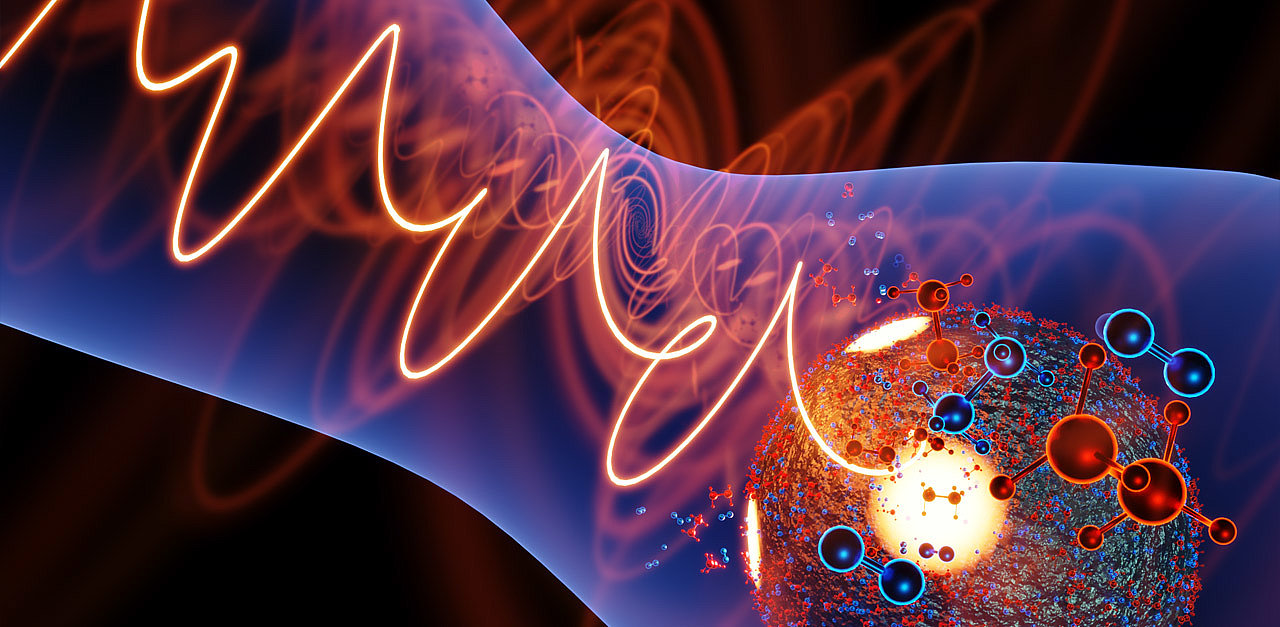Controlling strong electromagnetic fields on nanoparticles is the key to triggering targeted molecular reactions on their surfaces. Such control over strong fields is achieved via laser light. Although laser-induced formation and breaking of molecular bonds on nanoparticle surfaces have been observed in the past, nanoscopic optical control of surface reactions has not yet been achieved. An international team led by Dr. Boris Bergues and Prof. Matthias Kling at Ludwig-Maximilians-Universität (LMU) and the Max Planck Institute of Quantum Optics (MPQ) in collaboration with Stanford University has now closed this gap. The physicists determined for the first time the location of light-induced molecular reactions on the surface of isolated silicon dioxide nanoparticles using ultrashort laser pulses.
A nanoparticle in the field of a femtosecond laser pulse with tailored waveform and polarization. The controlled enhancement of the field in specific nanoscopic regions of the nanoparticle (yellow spots) induces site-selective photochemical reactions of the molecules adsorbed on the surface. Imaging of the molecular fragments emitted from these regions enables all-optical control of the reaction sites with nanometer resolution. Illustration: RMT.Bergues
All-optical nanoscopic spatial control of molecular reaction yields on nanoparticles
Journal: Optica 9, 551 (2022)
Dr. Boris Bergues
Head of the Strong-Field Dynamics Group
Laboratory for Attosecond Physics
LMU Munich / Max Planck Institute of Quantum Optics
Hans-Kopfermann-Str. 1
85748 Garching
Tel.: (+ 49 89) 32905 – 595
E-Mail: boris.bergues@mpq.mpg.de
http://attosecondimaging.de/strong-field-dynamics/
1st June 2022
